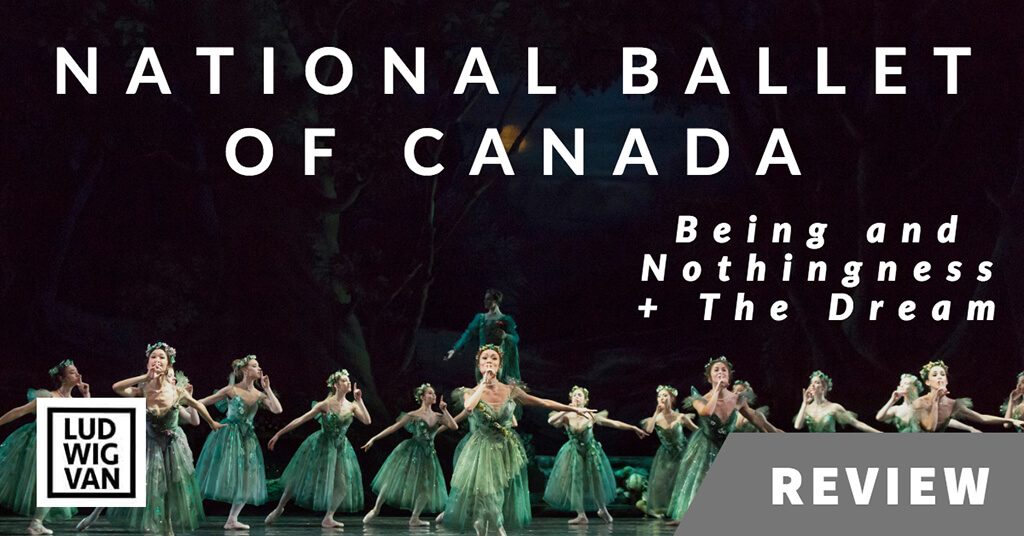
The National Ballet of Canada/Being and Nothingness choreographed by Guillaume Côté, and The Dream choreographed by Sir Frederick Ashton, Four Seasons Centre, Nov. 21 to Nov. 25. Tickets available at 416-345-9595 or national.ballet.ca. Details here.
It’s a well-known fact in the ballet world that the full-length works put bums in seats. The mixed programs are a lesser draw, so it behooves an artistic director to make judicious choices to attract the crowds. In this respect, The National Ballet’s Karen Kain has always been a savvy programmer and the current mixed bag of works is a case in point.
Contrast is the key. The bill of fare should include a tutu work in classical style along with something new. In the relentlessly contemporary category is Guillaume Côté’s Being and Nothingness. (2015). Côté is both a principal dancer and choreographic associate with the company, and having his piece on prominent display alongside a choreographic icon like Sir Frederick Ashton is a big career push for him. For the traditional work, Kain has reached back to Ashton’s The Dream (1964) based on Shakespeare’s A Midsummer Night’s Dream. This beloved ballet by one of Britain’s greatest storyteller choreographers hasn’t been performed by the National for seventeen years.
Côté is not a shrinking violet when it comes to choosing choreographic material. Being and Nothingness has been inspired by Jean-Paul Sartre’s 1943 eponymous seminal work that defined his existential philosophy. According to the program notes, Côté has taken key existential concepts — questions of freedom, the nature of selfhood, and the meaning of existence — as his points of concentration for his dance. These abstractions are expressed in seven scenes (two solos, four duets, and a marauding corps of eleven male dancers).
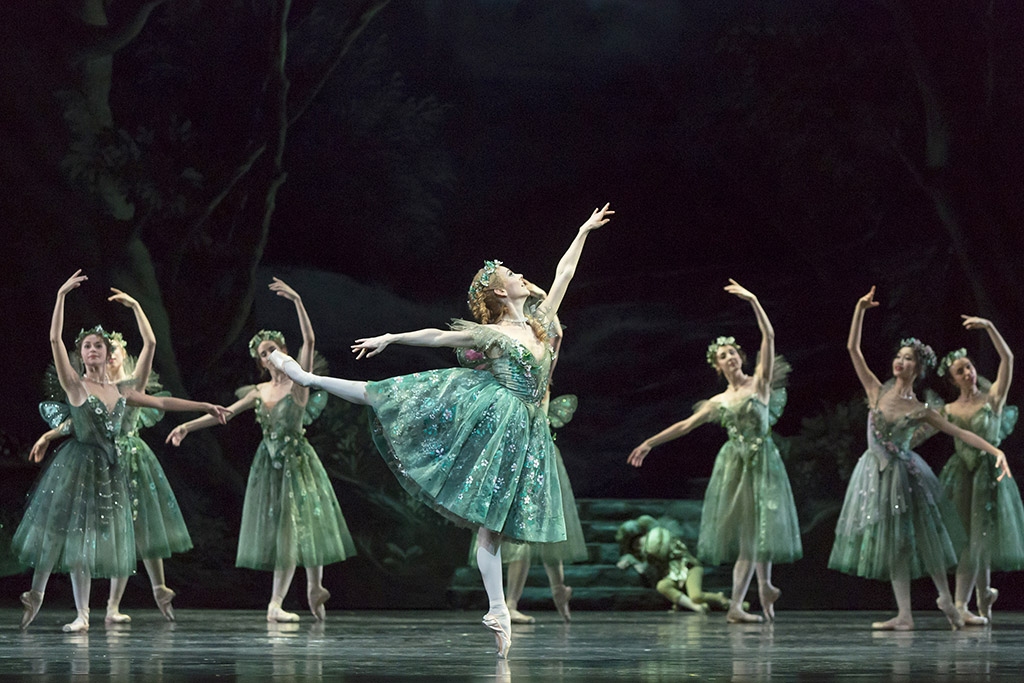
Sartre wrote extensively about both humankind’s search for individual completeness and the root of our sexual desire, and I see these ideas driving the piece — the former in the solos, the latter in the duets. As for the noisy male corps in their suits and fedoras, executing their synchronized movements, perhaps they are the mass herd who have no sense of individuality. The music score contains seven pieces for solo piano by Philip Glass, and the minimalism suits the angst-ridden choreography perfectly. Kudos to pianist Edward Connell who finds passion within Glass’ limited chord progressions. David Finn provided the dramatic lighting, and Krista Dowson the 1940s costumes cleverly set in Sartre’s time of writing.
Each scene is built around specific props designed by Michael Levine. The solos feature the great Greta Hodgkinson entranced by a naked light bulb (The Light), and company newcomer and rapidly rising corps member Siphesihle November getting distracted in his own thoughts while shaving (The Sink). The four duets illuminate troubled relationships with one person being more committed than the other. Each has quite different choreography. Kathryn Hosier and Félix Paquet are young lovers (The Bedroom).
The pas de deux between Chelsy Meiss and Jack Bertinshaw has the woman’s handkerchief as an anchor for the man suffering from spurned love (The Door). Svetlana Lunkina and Brendan Saye are a more evenly matched couple, but he still shows stronger feelings (The Living Room). Hodgkinson is joined by Ben Rudisin, as a telephone call takes precedence over his struggle for attention (The Call). As for the male corps, they show entitlement, over-confidence, power and violent tendencies (The Street).
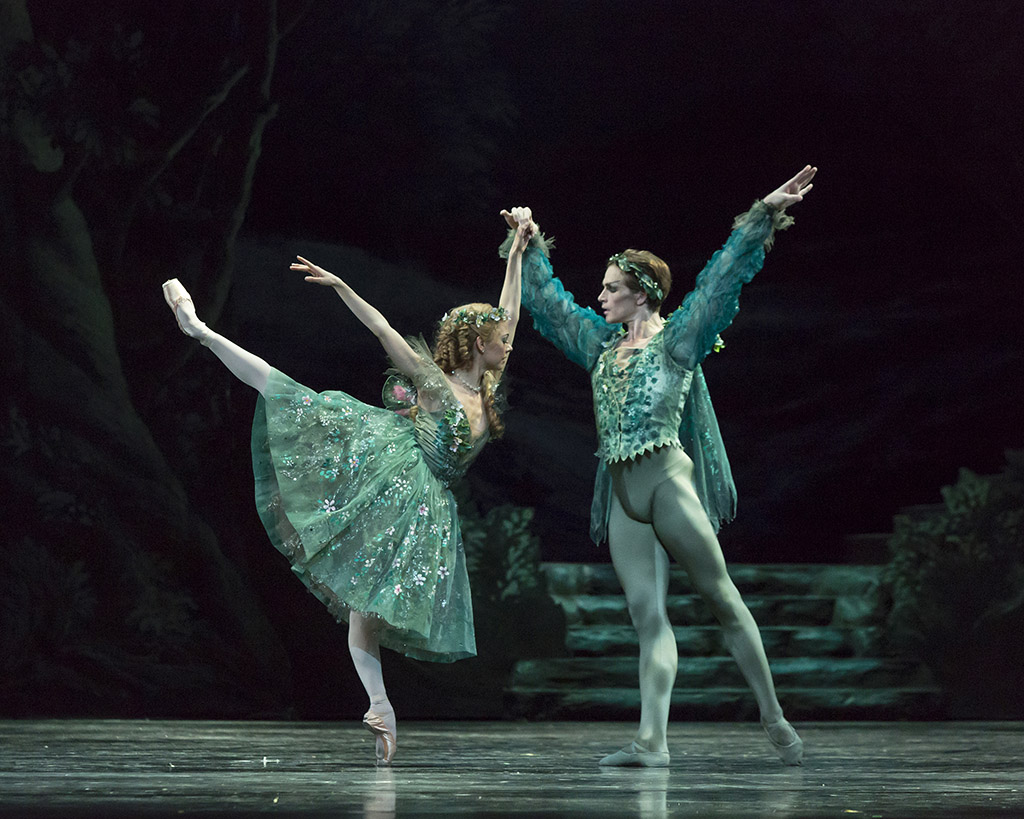
Being a member of the company, Côté knows his dancers well and his choreography fits them like hand to glove. His movement signature is total physicality manifested in choppy, staccato, nervous energy. The body negotiates through angles, flexes, bends, awkward limb thrusts, and a highly expressive gestural language, interpolated by surprisingly graceful jumps and turns.
The duets exhibit inventive partnering featuring dangerous lifts and whirlwind changes in direction. Trying to find the philosophy within the piece is not the way to enjoy it. Rather, Côté has presented a parade of human experience and the visual images he has created are what make Being and Nothingness so compelling.
As always, The Dream is charming, even though the fifty-minute piece has the action galloping along at lightning speed. This ballet is not about character development. It is bare bones condensed plot. Characters are introduced, and given their hurried moment in the sun.
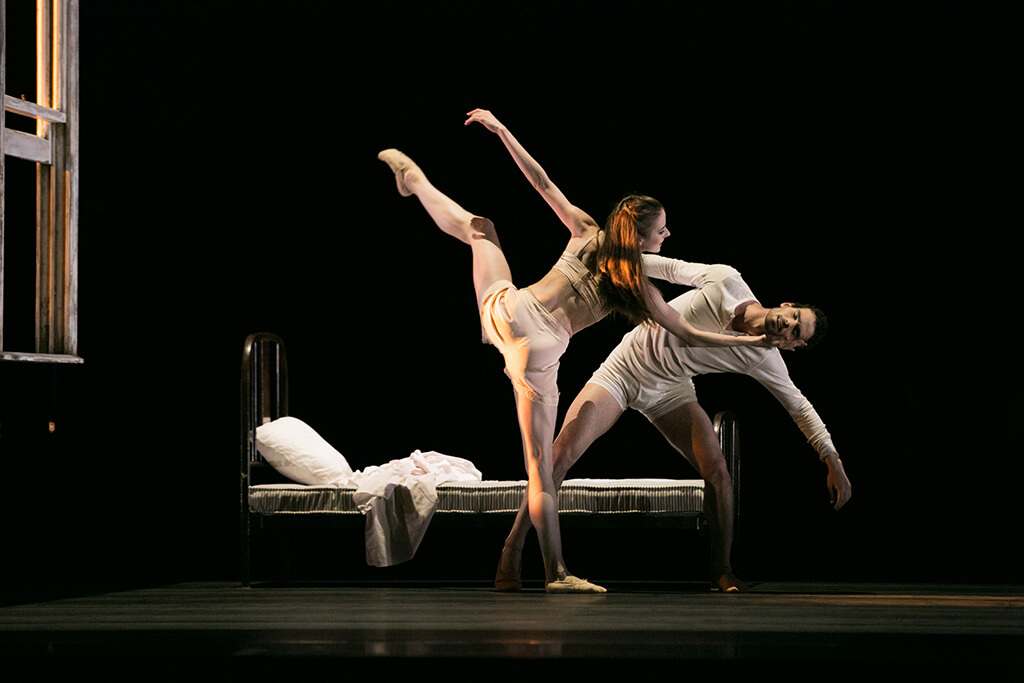
The imperious Oberon (Harrison James) dominates the ballet. He wants Titania (Jillian Vanstone) to give him her Changeling Boy. He interferes with the Athenian lovers, Helena (Tanya Howard) and Demetrius (Giorgio Galli), and Hermia (Chelsy Meiss) and Lysander (Ben Rudisin). He commands Puck (Skylar Campbell) to bring the flower that will make people fall in love, although it is Puck on his own volition, who turns Bottom (Joe Chapman) into a donkey. There are also Titania’s four leading fairies (Miyoko Koyasu, Meghan Pugh, Jordana Daumec, and Rui Huang), along with the female corps de ballet.
The cast includes some of the National’s best classical dancers. Ashton’s refined English style suits James perfectly, and he executes Oberon’s virtuoso choreography with aplomb.
Vanstone has always been an exquisite technician, and she finds just the right tone of delicacy for Titania. The couple’s final duet is simply gorgeous. Campbell gets to perform Ashton’s famous choreography for Puck, which he does brilliantly. The quicksilver role has the dancer being mostly in the air via jumps, with the legs in constantly shifting positions. Chapman is another in a long line of Bottoms who can perform in point shoes that emulate the donkey’s hoofs.
Ashton gives the lovers delightfully quirky partnering to illustrate the misunderstanding of both Demetrius and Lysander being in love with Helena, and the quartet seems to be having lots of fun. The leading fairies, needless to say, are dainty and ethereal, although the female corps did sound a bit clumpy on their landings. In their defence, Ashton did give the fairies rather a lot of jumps and hops.
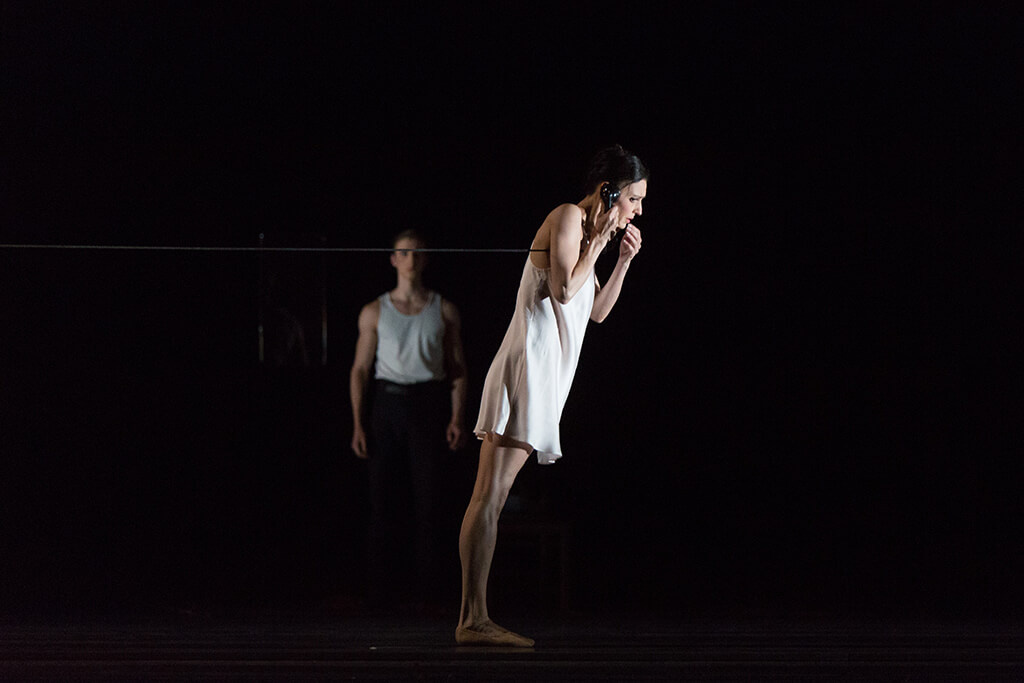
The late, great arranger of ballet music, John Lanchbery, had fashioned Felix Mendelssohn’s incidental music for Shakespeare’s play, into a lovely score for The Dream, which conductor David Briskin and the National orchestra executed smartly.
The boy sopranos from St. Michael’s Choir School provided the sung text, and although their diction was muddled, their sound was sweet. The music is by turns rushy for the fairies, jagged for the rustics and Bottom, and stately for Oberon and Titania, and these divisions were clearly defined in the playing.
David Walker’s towering forest greenery and over-stuffed Victorian costumes seem old-fashioned, but they still work.
This mixed program is for all tastes. Traditionalists have their tutus, and modernists their rough edge.
- INTERVIEW | Actor Diego Matamoros Takes On Icon Walt Disney In Soulpepper Production Of Hnath Play - April 16, 2024
- SCRUTINY | Opera In Concert Shine A Light On Verdi’s Seldom Heard La Battaglia Di Legnano - April 9, 2024
- SCRUTINY | Lepage & Côté’s Hamlet Dazzles With Dance And Stagecraft Without Saying Anything New - April 5, 2024



